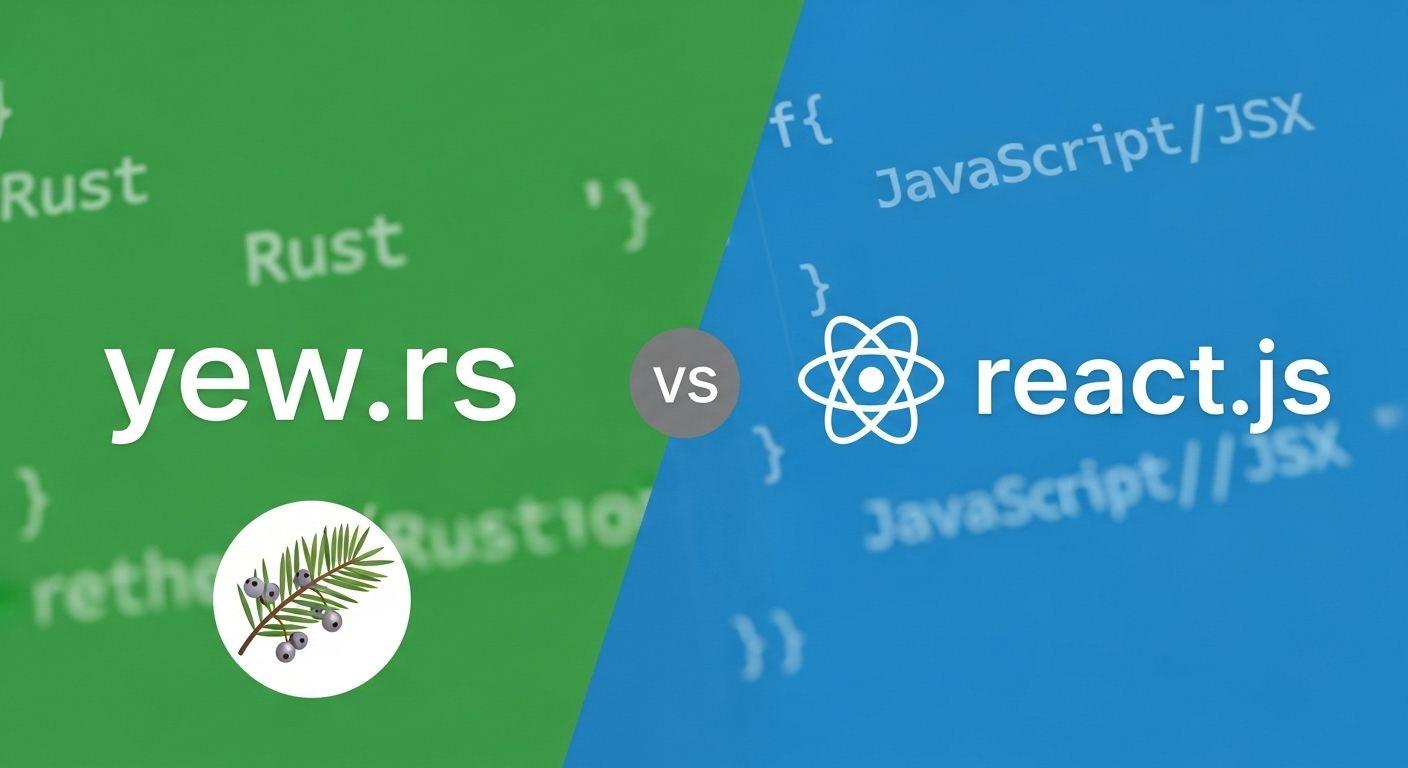Yew.rs vs. React: A New Challenger for Frontend Development

For years, React has been a dominant force in frontend development, praised for its component-based architecture and vast ecosystem. But a new challenger has emerged from the world of Rust: Yew.rs. Yew is a modern frontend framework that leverages Rust’s power and compiles to WebAssembly (Wasm), promising near-native performance in the browser. This article will dive into a comparison of Yew.rs and React, exploring their strengths, weaknesses, and ideal use cases.
The Core Differences: Rust vs. JavaScript
At the heart of the comparison lies the fundamental difference in their programming languages. React is built on JavaScript (or TypeScript), a dynamically-typed language that is interpreted by the browser’s JavaScript engine. Yew, on the other hand, is written in Rust, a statically-typed language renowned for its focus on performance, memory safety, and concurrency.
This distinction has profound implications. Rust’s strict compiler and ownership model catch a wide range of bugs at compile-time, leading to more robust and secure applications. In contrast, JavaScript’s flexibility can sometimes lead to runtime errors that are harder to track down.
Performance: The WebAssembly Advantage
One of the most compelling arguments for Yew is its performance. By compiling to WebAssembly, Yew applications can run at near-native speeds, often outperforming their JavaScript counterparts. This makes Yew an excellent choice for computationally intensive applications, such as:
- Data Visualization: Rendering complex charts and graphs smoothly.
- Real-Time Applications: Handling frequent updates while maintaining a responsive UI.
- Web-based Games: Leveraging near-native speed for a fluid gaming experience.
- Complex Web Apps: Applications with intricate state management or large datasets that might face performance bottlenecks in React.
While React is known for its fast rendering thanks to its virtual DOM, Yew, with Rust’s static typing and compilation to Wasm, can offer a significant performance boost, especially for larger and more complex applications. In some benchmarks, Yew is already significantly faster than React.
“With Rust, we can create powerful web applications that are both fast and reliable by combining its performance and safety with Yew’s ease of use and familiar concepts.”
Developer Experience and Learning Curve
For developers familiar with React, Yew will feel surprisingly familiar. It embraces a similar component-based model and even features an html! macro that is reminiscent of JSX. Yew also incorporates the popular concept of hooks, allowing for cleaner and more modular code.
However, the learning curve for Rust is undeniably steeper than for JavaScript or TypeScript. Rust’s concepts of ownership, borrowing, and lifetimes can be challenging for developers new to systems programming. This initial investment in learning Rust is a significant factor to consider.
React, on the other hand, benefits from a massive and mature ecosystem. With a vast collection of libraries, tools, and learning resources available through npm, developers can often find ready-made solutions to common problems. Yew’s ecosystem, while growing rapidly, is still smaller in comparison.
Key Considerations for Choosing Your Framework
| Feature | Yew.rs (Rust) | React.js (JavaScript/TypeScript) |
|---|---|---|
| Performance | Near-native speed with WebAssembly. | Fast with virtual DOM, but can have bottlenecks. |
| Type Safety | Strong static typing enforced by the Rust compiler. | Dynamically typed; TypeScript can be added. |
| Memory Safety | Guaranteed memory safety without a garbage collector. | Relies on garbage collection, which can cause pauses. |
| Learning Curve | Steeper due to Rust’s unique concepts. | Generally easier, especially for JavaScript developers. |
| Ecosystem | Growing but smaller than React’s. | Vast and mature with extensive libraries and tools. |
| Development Speed | Can be slower initially due to Rust’s strictness. | Often faster for prototyping and simpler applications. |
Conclusion
The choice between Yew.rs and React ultimately depends on your project’s specific needs and your team’s expertise.
Choose Yew.rs if:
- Performance is a critical requirement for your application.
- You are building a computationally intensive web application.
- Memory safety and reliability are paramount, such as in fintech or healthcare.
- You and your team are comfortable with or willing to learn Rust.
Stick with React.js if:
- You need to build a project quickly and leverage a vast ecosystem of libraries.
- Your team is primarily composed of JavaScript/TypeScript developers.
- Raw performance is not the top priority.
- You value a mature and well-documented framework with a massive community.
Yew.rs presents a compelling alternative to traditional JavaScript frameworks, especially for performance-critical applications. While React remains a dominant and excellent choice for a wide range of projects, Yew’s unique blend of performance, safety, and modern development practices makes it a framework to watch as the web continues to evolve.